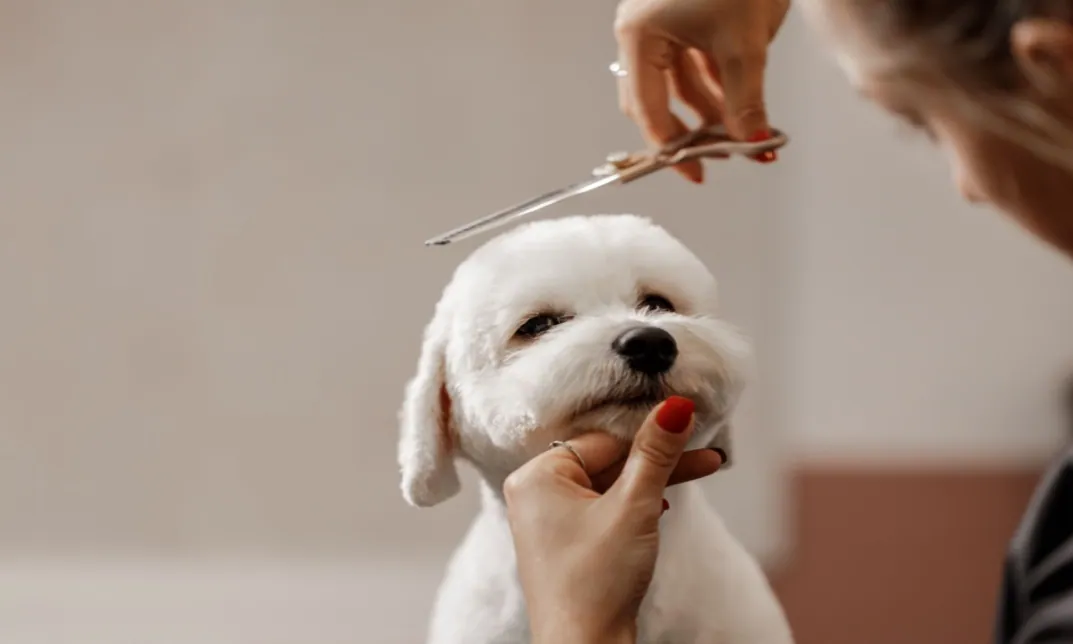Grooming keeps your furry friend healthy and can even identify potential health concerns. However, a number of pet owners think that dog grooming is a waste of money or unnecessary for their dogs. So, with all the services offered by professional groomers, you may wonder whether these services are affordable or not.
The question is, how much does it actually cost? Now, we’ll explore the typical cost range for various grooming services. Plus, we’ll try to help you make informed decisions about your dog’s grooming needs.
What is dog grooming?
Dog grooming is more than just a fancy bath and haircut for your furry friend. It’s a vital part of keeping your dog clean, healthy, and happy. Here’s what dog grooming typically involves:
- Maintaining a Healthy Coat: The benefits of regular brushing include removing loose hair, dirt, and debris that can irritate your dog’s skin and cause matting. Matting can trap moisture, leading to skin infections and discomfort. Brushing also stimulates blood circulation and promotes healthy fur growth.
- Bathing: A good bath with a dog-friendly shampoo that washes away dirt, allergens, and unpleasant doggy smells. How often your dog needs a bath depends on their breed, coat type, and activity level.
- Hair Removal and Trimming: Some dog breeds require regular trimming or clipping to keep their coat manageable and prevent overheating. Professional groomers have the expertise to style your dog according to breed standards or your preferences.
- Nail Trimming: Mostly, long nails can be uncomfortable for your dog and can even cause them to walk abnormally. Regular nail trims are important for maintaining your dog’s paw health.
- Ear Cleaning: Floppy ears can trap moisture and harbour bacteria, leading to ear infections. Groomers will gently clean your dog’s ears and check for any signs of irritation or infection.
- Beyond the Basics: Some groomers offer additional services like anal gland expression, teeth brushing, and de-shedding treatments.
The specifics of dog grooming will vary depending on your dog’s breed, coat type, age, and activity level. Some breeds require frequent haircuts and professional styling, while others might just need a good brush out every few weeks.

How much does dog grooming cost in the UK?
The cost of dog grooming in the UK can vary widely based on several factors, including the size and breed of the dog, the type of grooming services required, and the location of the grooming salon. On average, here are some estimated costs:
Small Dogs (Chihuahuas, Yorkshire Terriers)
- Basic grooming: £20 – £35
- Full grooming: £30 – £45
Medium Dogs (Cocker Spaniels, Beagles)
- Basic grooming: £25 – £40
- Full grooming: £35 – £50
Large Dogs (Labradors, German Shepherds)
- Basic grooming: £30 – £50
- Full grooming: £40 – £70
Extra Large Dogs (Great Danes, St. Bernards)
- Basic grooming: £35 – £60
- Full grooming: £50 – £90
Additional Services
- Nail Clipping : £5 – £10
- Teeth Cleaning : £10 – £30
- Ear Cleaning : £5 – £15
- Flea Treatment : £5 – £15
Factors Affecting Cost
- Breed-Specific Grooming: Some breeds require more specialized grooming, which can increase the cost.
- Condition of the Coat: Dogs with matted fur or those requiring extra attention will cost more.
- Frequency of Grooming: Regular grooming packages can sometimes be cheaper on a per-session basis.
- Location: Grooming services in urban areas or affluent regions may charge higher rates compared to those in rural areas.
For the most accurate pricing, it’s best to contact local groomers directly, as prices can vary significantly.
How often should a dog be groomed?
Most people have a question in their mind: how often is dog grooming required? The frequency of dog grooming depends on several factors, including the breed, coat type, lifestyle, and specific needs of the dog. Here are some general guidelines to help you determine how often your dog should be groomed:
Breed and Coat Type
- Short-Haired Dogs: These breeds typically require less frequent grooming. A good brushing once a week and a bath every 1-2 months are usually sufficient.
- Medium to Long-Haired Dogs: These dogs need more frequent grooming. Brushing 2-3 times a week and taking a bath every 4-6 weeks are recommended.
- Double-Coated Dogs: These breeds have an undercoat that sheds seasonally. During shedding season, they may need to be brushed daily and bathed every 4-8 weeks.
- Curly or Wavy-Haired Dogs: They require regular grooming to prevent matting. Brushing every other day and professional grooming every 4-6 weeks are advised.
Lifestyle and Activity Level
- Active Dogs: Dogs that spend a lot of time outdoors or are highly active may need more frequent grooming to remove dirt, debris, and tangles.
- Indoor Dogs: Dogs that spend most of their time indoors may require less frequent grooming but still need regular brushing and bathing to maintain a healthy coat.
Specific Grooming Needs
- Nail Trimming: Regardless of breed, dogs typically need their nails trimmed every 3-4 weeks.
- Ear Cleaning: Ears should be checked and cleaned regularly, especially for breeds prone to ear infections. This can be done once a month or as needed.
- Teeth Brushing: Ideally, a dog’s teeth should be brushed daily to maintain oral health, but at a minimum, aim for 2-3 times a week.
Seasonal Changes
- Shedding Seasons: Dogs with double coats or heavy shedding breeds may require more frequent grooming during shedding seasons (spring and fall) to manage the extra fur.
Regular grooming not only keeps your dog looking their best but also promotes overall healthiness and well-being. It’s essential to establish a grooming routine that suits your dog’s specific needs and to consult with a professional groomer for tailored advice.





